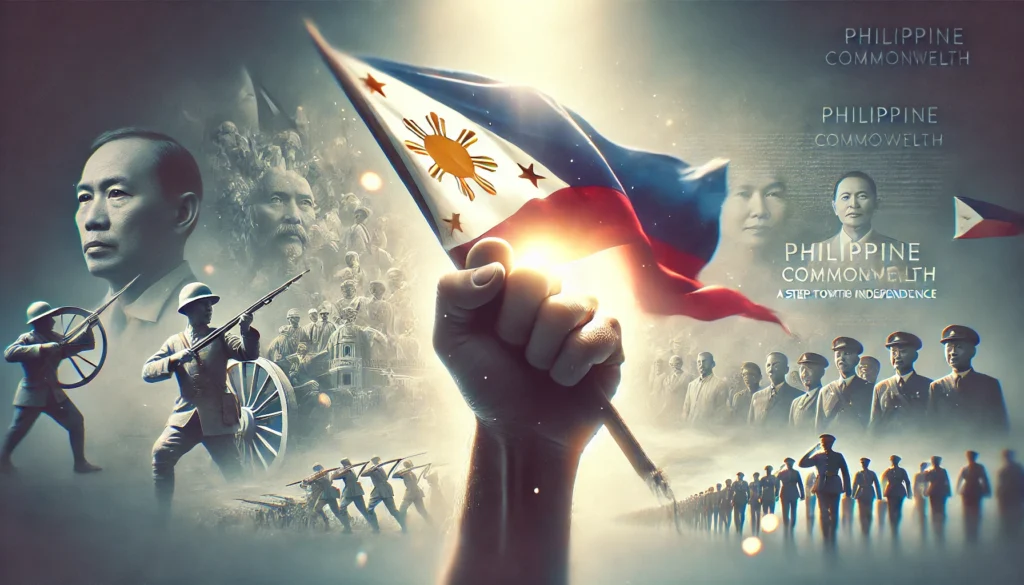The journey towards Philippine independence was a long and complex process, marked by significant milestones and political negotiations. One of the most crucial steps in this journey was the establishment of the Philippine Commonwealth in 1935. This period served as a transitional phase, preparing the Philippines for full independence while still under American sovereignty.
Origins of the Commonwealth
The idea of a commonwealth government for the Philippines emerged from the ongoing discussions between Filipino leaders and American policymakers in the early 20th century. The United States, having acquired the Philippines from Spain following the Spanish-American War of 1898, faced growing pressure both domestically and internationally to grant independence to its colony.
In 1934, the United States Congress passed the Tydings-McDuffie Act, also known as the Philippine Independence Act. This landmark legislation set the stage for the creation of the Philippine Commonwealth and outlined a ten-year transition period leading to full independence.
Structure and Governance of the Commonwealth
The Philippine Commonwealth was designed to be a semi-autonomous government, operating under the supervision of the United States. This unique arrangement allowed for a gradual transfer of power and responsibilities to Filipino leaders while maintaining American oversight in key areas.
Constitutional Framework
The 1935 Constitution served as the fundamental law of the Philippine Commonwealth. This document, drafted by Filipino leaders and approved by the American government, established the structure of the commonwealth government and outlined the rights and duties of its citizens.
Key features of the 1935 Constitution included:
- A unicameral National Assembly (later changed to a bicameral Congress)
- A strong executive branch led by a president
- An independent judiciary
- Provisions for civil liberties and social justice
Leadership and Elections
The Commonwealth government was led by a president, elected by the Filipino people. Manuel L. Quezon won the first presidential election in 1935, with Sergio Osmeña serving as vice president. These elections marked a significant step towards self-governance, as Filipinos were now choosing their own leaders.
Economic and Social Developments
The Commonwealth period witnessed significant economic and social changes in the Philippines. The government focused on nation-building efforts, aiming to strengthen the country’s institutions and prepare for independence.
Economic Policies
Under the Commonwealth, efforts were made to diversify the economy and reduce dependence on the United States. Key economic initiatives included:
- Promotion of industrialization
- Land reform programs
- Development of infrastructure
- Expansion of public education
Social Reforms
The Commonwealth government also implemented various social reforms aimed at improving the lives of Filipinos. These included:
- Expansion of healthcare services
- Promotion of national language and culture
- Efforts to integrate indigenous communities
Table: Key Events During the Commonwealth Period
| Year | Event |
|---|---|
| 1935 | Establishment of the Philippine Commonwealth |
| 1935 | Manuel L. Quezon elected as first Commonwealth President |
| 1936 | National Defense Act passed, creating the Philippine Army |
| 1937 | Women’s suffrage approved |
| 1940 | Immigration Act passed, limiting Chinese immigration |
| 1941 | Manuel L. Quezon re-elected as President |
| 1941 | Japan attacks the Philippines, beginning World War II in the region |
| 1944 | Sergio Osmeña becomes President following Quezon’s death |
| 1946 | Philippines gains independence |
The Commonwealth and World War II
The outbreak of World War II significantly impacted the Philippine Commonwealth and its path to independence. The Japanese invasion in December 1941 led to the occupation of the Philippines, forcing the Commonwealth government into exile.
Commonwealth Government-in-Exile
During the Japanese occupation, President Quezon and other Commonwealth officials established a government-in-exile in the United States. This ensured the continuity of the Philippine government and maintained the country’s alliance with the United States in the war effort.
Liberation and Reconstruction
The liberation of the Philippines in 1944-1945 allowed for the restoration of the Commonwealth government. Under President Sergio Osmeña, who succeeded Quezon after his death in 1944, efforts focused on rebuilding the war-torn country and preparing for the promised independence.
Preparations for Independence
As the Commonwealth period neared its end, both Filipino and American leaders worked to ensure a smooth transition to full independence. This involved addressing various political, economic, and security concerns.
Political Preparations
Key political preparations included:
- Strengthening democratic institutions
- Developing foreign policy frameworks
- Negotiating post-independence treaties with the United States
Economic Considerations
Economic preparations focused on:
- Establishing trade agreements
- Developing a national currency
- Creating economic plans for an independent Philippines
Security Arrangements
Security preparations involved:
- Building up the Philippine military
- Negotiating military base agreements with the United States
- Developing national defense strategies
Legacy of the Commonwealth
The Philippine Commonwealth period left a lasting impact on the country’s political, social, and economic landscape. Its legacy can be seen in various aspects of modern Philippine society and governance.
Political Legacy
The Commonwealth era established many of the political structures and practices that continue in the Philippines today, including:
- The presidential system of government
- The bicameral legislature
- The system of checks and balances
Cultural and Social Impact
The Commonwealth period also saw significant developments in Philippine culture and national identity, including:
- The promotion of a national language
- The development of a distinct Filipino culture that blended indigenous, Spanish, and American influences
- The establishment of national symbols and institutions
Economic Foundations
Many economic policies and institutions established during the Commonwealth era continued to influence Philippine economic development after independence, such as:
- The central banking system
- Industrial development programs
- Agricultural modernization efforts
Challenges and Criticisms
While the Commonwealth period is generally viewed as a positive step towards Philippine independence, it was not without its challenges and criticisms.
American Influence
Some critics argued that the Commonwealth arrangement allowed for too much continued American influence in Philippine affairs. This included:
- American retention of military bases
- Continued economic ties favoring American interests
- Cultural influence through education and media
Internal Political Struggles
The Commonwealth period also saw internal political struggles, including:
- Debates over the pace of Filipinization
- Conflicts between different political factions
- Challenges in integrating diverse ethnic and regional interests
Economic Dependency
Despite efforts to diversify the economy, the Philippines remained heavily dependent on the United States economically, leading to concerns about true economic independence.
The Transition to Independence
As the Commonwealth period drew to a close, final preparations were made for the transfer of full sovereignty to the Philippines.
Independence Act Implementation
The provisions of the Tydings-McDuffie Act were carefully implemented, including:
- The resolution of outstanding economic issues
- The transfer of government properties and assets
- The finalization of diplomatic protocols
July 4, 1946: Independence Day
On July 4, 1946, the Philippines officially gained independence from the United States. This momentous occasion marked the culmination of the Commonwealth period and the beginning of a new era for the Filipino nation.
Conclusion: The Commonwealth’s Place in Philippine History
The Philippine Commonwealth represents a crucial chapter in the country’s journey towards independence. It served as a proving ground for Filipino self-governance, a period of nation-building, and a time of preparation for the challenges of full sovereignty.
While the Commonwealth era had its limitations and criticisms, it undeniably played a vital role in shaping the modern Philippines. The institutions, policies, and national identity forged during this period continue to influence Philippine society and governance to this day.
As we reflect on this important historical period, we are reminded of the complex path to independence and the ongoing process of nation-building. The Commonwealth era stands as a testament to the Filipino people’s resilience, adaptability, and unwavering pursuit of national sovereignty.
Disclaimer: This article aims to provide an accurate and comprehensive overview of the Philippine Commonwealth period based on historical records and scholarly research up to 2023. However, historical interpretations may evolve as new information comes to light. Readers are encouraged to report any inaccuracies or provide additional insights for prompt review and potential updates to ensure the continued accuracy and relevance of this content.




